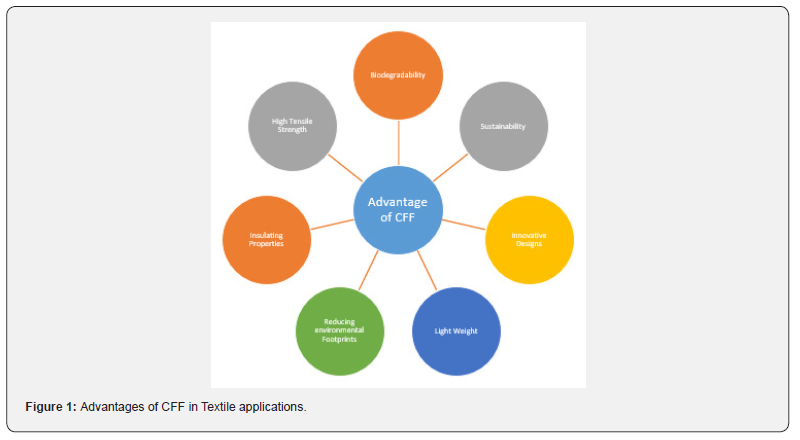Fashion Technology & Textile Engineering - Juniper Publishers
Abstract
Sustainability and environmental preservation are gaining significance in the textile industry. Feathers, an ever-present byproduct, are a promising environmental friendly textile alternative. This brief review covers poultry feather fiber in textiles. Chicken feather fibers (CFF) are composed of keratin and are biodegradable, strong, and lightweight. These characteristics make them desirable for textiles. Using mechanical, chemical, and enzymatic extraction and modification strategies, this article optimizes chicken feather fibers for textile use. Feather fibers can be incorporated into composites, filaments, nonwoven textiles, and coatings. They are hypoallergenic and biocompatible and have medical and healthcare applications. The carbon footprint and textile refuse of the industry are addressed. For widespread application, processing efficiency and scalability issues must be resolved. Feather fibers have potential. This brief analysis demonstrates that poultry feather fibers can be an environmentally friendly and sustainable textile industry option. This renewable resource has the potential to revolutionise the textile industry and promote sustainability and circularity.
Keywords: Textile; Chicken Feather Fiber; Livestock; Renewable; Sustainable Development
Introduction
The textile industry, one of the world’s largest and most visible, has historically relied heavily on materials that are resource-intensive and often environmentally hazardous [1]. The textile industry, like many others, has been feeling the pressure in recent years to adopt more environmentally friendly and sustainable practices. The growing number of eco-conscious individuals is largely responsible for this shift in perspective. As a result of this shift in thinking, scientists have begun exploring creative alternatives to traditional textile materials like the fiber obtained from chicken feathers. This paradigm change has specifically stimulated research into novel substitutes for traditional textiles [2,3].
Chicken feathers have gained a lot of attention recently due to their potential uses in the textile industry and their unique properties. Feathers from chickens are a common leftover from the poultry business. These feathers are biodegradable, strong, and incredibly light. Keratin, a protein also present in hair, nails, and horns, is the main component of these feathers. The textile industry is increasingly interested in acquiring materials that are sustainable and environmentally responsible, and because to their inherent features, they present an enticing option [4].
The goal of this article is to provide a comprehensive overview of the many applications of chicken feather fiber in the textile industry [5]. The processes of extracting and altering chicken feather fibers, as well as the various applications of these fibers in textile production, are only a few of the many issues explored. It also considers the environmental impacts and industrial challenges associated with using this cutting-edge material in textile manufacturing [6].
The textile business is constantly developing and changing to accommodate the needs of an increasingly eco-conscious clientele [7]. The industry is committed to both innovation and sustainability, and as part of this process, it is investigating unconventional materials like chicken feather fiber. In the quest for more sustainable textile production, chicken feather fiber has the potential to be a game-changer, and this article provides a thorough reference for understanding that potential [8].

Advantages of CFF in textile industry
CFF offers several advantages when used in Textile industry. Some of them are highlighted in figure 1.
Conclusion
Finally, the utilization of chicken feather fibers within the textile industry exhibits considerable potential and has great promise. This sustainable and ecologically conscious alternative to conventional textiles not only addresses the issue of poultry waste management, but also offers numerous additional advantages. The utilization of chicken feather fibers in fabric production offers notable advantages due to their lightweight and robust nature. These fibers possess the potential to be combined with various materials, resulting in fabrics that exhibit enhanced thermal insulation properties and improved moisture-wicking capabilities. Furthermore, they are a commendable option due to their accessibility and affordability. Despite the existing challenges related to processing and scaling, the continuous investigation and emergence of novel concepts within this domain indicate a promising outlook for the utilization of chicken feather fiber in revolutionising the textile industry, hence enhancing its sustainability, and reducing its environmental impact.
To Know more about Current Trends in Fashion Technology & Textile Engineering
Click here: https://juniperpublishers.com/ctftte/index.php
To Know more about our Juniper Publishers
Click here: https://juniperpublishers.com/index.php





No comments:
Post a Comment